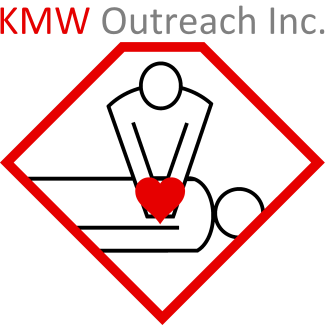In the construction industry, workers face daily risks that most people can only imagine. From heavy machinery and power tools to unstable structures and hazardous materials, the potential for accidents is high. Given these risks, first aid training is not just an extra skill for construction workers—it’s essential for safety, saving lives, and ensuring a healthy workplace environment. Let’s explore why first aid training should be a top priority in construction and the significant benefits it brings.
1. Increased Safety and Preparedness on Site
Construction sites are inherently dangerous, with a variety of potential hazards like falling objects, heavy equipment, and electrical risks. Even with the best safety protocols in place, accidents can still happen, and when they do, every second counts. Workers trained in first aid can respond swiftly to incidents, providing immediate care to injured colleagues. This quick response is often critical in stabilizing the injured person until professional medical help arrives.
Example Scenario: Imagine a worker suffers a severe cut or crush injury. With proper first aid training, coworkers can quickly control bleeding, immobilize the affected area, and monitor the person’s vital signs while awaiting emergency medical assistance.
2. Reducing the Severity of Injuries
In emergencies, especially those involving serious injuries, first aid knowledge can prevent the situation from worsening. For example, proper first aid can help prevent shock, maintain airways, and stop bleeding—measures that can significantly reduce the severity of injuries.
Many injuries that occur on construction sites, such as falls or burns, require quick intervention to limit long-term damage. First aid training empowers workers to act confidently, minimizing the chances of further complications or worsening of injuries.
Example Scenario: A fall from a height could lead to fractures or spinal injuries. A trained worker would know not to move the injured person unnecessarily, thereby preventing further damage.
3. Enhanced Team Morale and Security
Knowing that their colleagues are equipped to handle emergencies gives workers peace of mind and boosts morale. When workers feel secure, they are more focused and less anxious about potential risks, fostering a positive work environment. First aid training instills a sense of mutual responsibility among team members, reinforcing the idea that they are working together to keep each other safe.
A well-trained workforce not only helps reduce the frequency and impact of accidents but also builds a strong culture of safety and responsibility.
4. Fulfilling Legal and Occupational Requirements
In many countries, workplace health and safety regulations mandate that construction companies provide first aid training. These regulations are in place to ensure a basic level of safety for employees and to minimize the risk of serious injuries or fatalities. Having trained staff on site also aids in legal compliance and can prevent potential fines or shutdowns due to non-compliance.
Example Scenario: In Ontario, WSIB requires workplaces to have at least one first aid trained worker per shift. For workplaces with 1-5 workers per shift, one worker must be trained in Emergency First Aid. Workplaces that have 6+ workers on a shift, require one worker to be trained with Standard First Aid. Remember these are only guidelines and it is always better to have more than one worker trained.
5. Empowerment and Confidence Among Workers
First aid training does more than prepare workers for emergencies; it empowers them. Workers who are confident in their first aid skills are not only more capable of handling accidents on site but also feel empowered in other aspects of their lives. This sense of confidence can reduce stress and hesitation in critical moments, as trained workers are more likely to step up and take control of emergency situations.
6. Potential Life-Saving Skills
There’s no greater reason to provide first aid training than its potential to save lives. From administering CPR to stopping severe bleeding, trained workers can act immediately and potentially prevent fatalities on site. On construction sites, where medical help may not be immediately available, having a trained individual on hand can mean the difference between life and death.
Practical Steps to Implement First Aid Training on Construction Sites
-
Schedule Regular Training Sessions: Construction companies should offer routine training to refresh and update workers’ knowledge. With the Canadian Red Cross blended first aid program, workers have access to the online modules for their certification period. Having workers review these modules annually can be a great way to refresh their knowledge.
-
Ensure Access to Proper First Aid Kits: According to WSIB, every worksite needs to be stocked with first aid kits and supplies. Find an easy checklist of what should be in your first aid kits here. Consider going beyond these regulations and ensure each site has multiple well-stocked first aid kits, with contents tailored to the specific hazards of the site, in addition to the required supplies.
-
Encourage a Culture of Safety and Awareness: Promote first aid awareness among all employees, not just those required to undergo training, so that everyone feels responsible for workplace safety. Consider using our free PDF downloads to keep the health and safety board fresh and educational.
-
Conduct Drills and Scenario Training: Practical training that simulates common on-site injuries or incidents can improve workers' readiness and response time. Consider adding practical first aid scenarios to the regular training of employees.
Final Thoughts
First aid training is more than just a regulatory checkbox for construction companies. It’s a vital, life-saving skill set that can protect workers, reduce injury severity, boost morale, and ensure a safer workplace. Investing in first aid training means investing in workers’ health, safety, and well-being—benefits that ultimately contribute to a more productive and resilient workforce. For construction companies that want to prioritize safety, first aid training isn’t an option; it’s a necessity.

